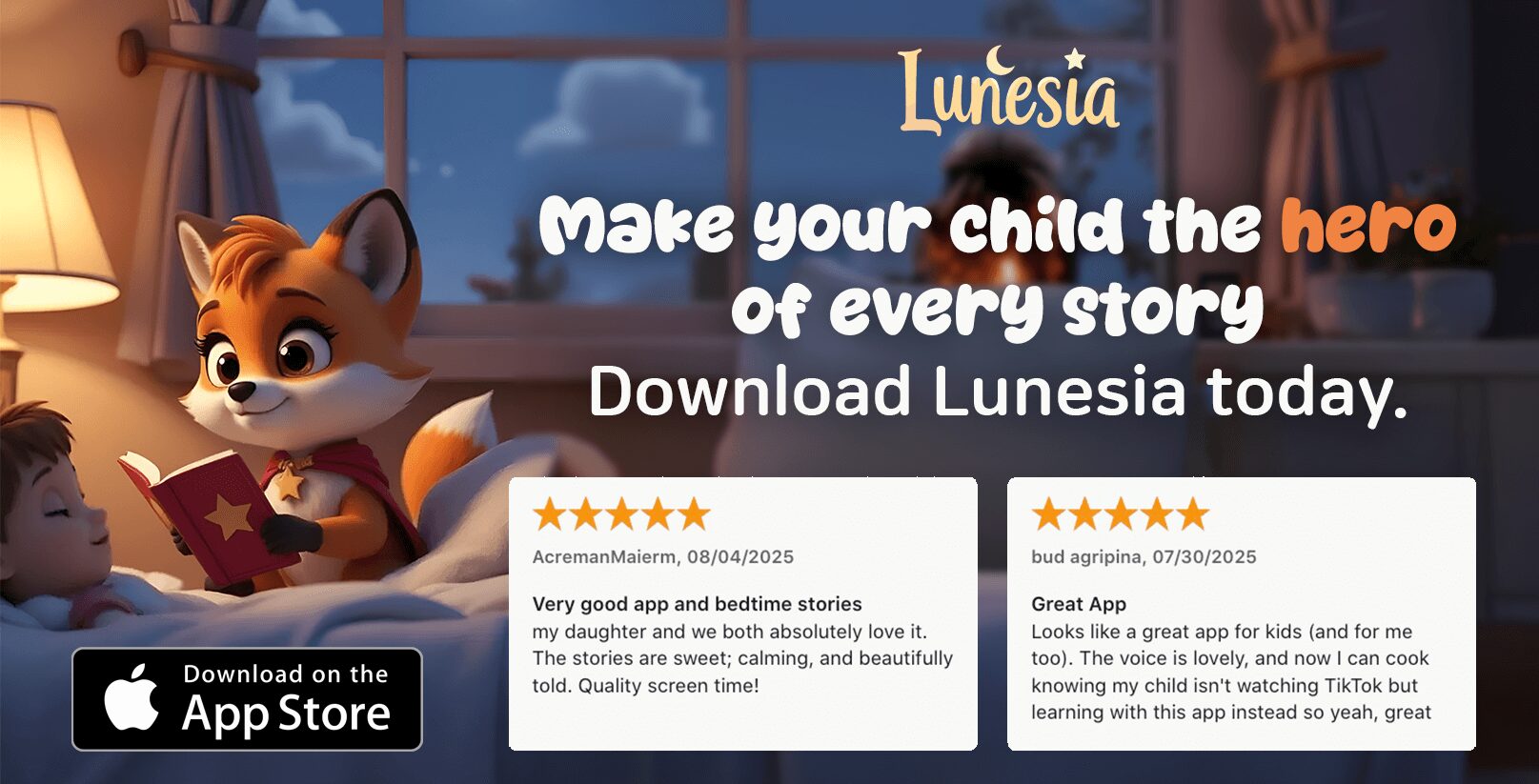When my daughter was four, she struggled to understand why her best friend didn’t want to share toys. Instead of a lecture, I told her a story about a little squirrel who learned the value of sharing. Her eyes lit up, and she said, “Mom, I get it now!” That moment showed me the magic of storytelling.
Stories have a unique way of turning complex feelings into relatable experiences. They help children explore emotions like joy, sadness, and anger in a safe and engaging way. For parents, storytelling becomes a bridge to connect with their child on a deeper level.
Through stories, children learn essential skills like empathy, problem-solving, and communication. They see characters navigate challenges, which helps them understand their own behavior and relationships. It’s not just about entertainment—it’s about building a foundation for life.
In this article, we’ll explore how storytelling shapes a child’s growth and provide practical strategies to make it a meaningful part of your family’s routine. Let’s dive into the world of stories and discover their lasting impact.
Introduction: The Power of Storytelling in Child Development
When my son first faced a tough decision at school, I turned to a story about a brave knight. Through the knight’s journey, he learned to weigh his choices and understand their consequences. Stories like this have a unique way of helping children make sense of their world.
Storytelling isn’t just about entertainment. It’s a powerful tool that builds communication skills and helps children express their feelings. By hearing about characters who face challenges, kids learn to navigate their own emotions and relationships.
Caregivers and educators play a key role in this process. Whether it’s a bedtime story or a classroom activity, storytelling creates a safe space for children to explore complex emotions. It also enhances their vocabulary, making it easier for them to articulate what they feel.
In this guide, we’ll dive into the science behind storytelling and share practical strategies you can use at home or in the classroom. From selecting the right stories to encouraging interactive discussions, you’ll discover how to make storytelling a meaningful part of your child’s growth.
| Benefit | How Storytelling Helps |
|---|---|
| Emotional Awareness | Children learn to identify and express their feelings through relatable characters. |
| Problem-Solving | Stories present challenges and solutions, teaching kids to think critically. |
| Social Skills | Group storytelling activities encourage cooperation and turn-taking. |
By the end of this article, you’ll have a toolkit of strategies to support your child’s emotional and cognitive growth. Let’s explore how stories can shape their future in meaningful ways.
Emotional Development: Key Strategies and Stages
When my niece first started preschool, she often came home upset about small conflicts with her friends. It was a reminder that understanding and managing emotions is a journey that begins early in life. From infancy to preschool, children go through distinct stages of emotional growth, each with its own challenges and milestones.
Noticing, Expressing, and Managing Emotions
In the first stage, infants begin to notice emotions through crying and cooing. These early signals are their way of communicating needs and feelings. As they grow, toddlers start to express emotions more clearly, often through words or actions. This is where storytelling can play a powerful role.

Interactive stories help children name their feelings. For example, a story about a character who feels sad after losing a game can teach kids to identify and articulate their own emotions. This builds their communication skills and helps them navigate social situations.
Managing emotions is the next step. Preschoolers learn self-soothing techniques, like taking deep breaths or using a favorite toy for comfort. Positive caregiver responses, such as validating feelings and offering support, also play a crucial role in this stage.
Healthy Emotional Milestones
Every child develops at their own pace, but there are common milestones to look for. By age 2, toddlers start understanding simple requests and expressing basic emotions like happiness or frustration. By age 4, they can recognize and name more complex feelings, such as jealousy or excitement.
It’s important to remember that behaviors like tantrums are a normal part of growth. They’re a sign that your child is learning to process strong emotions. Creating a safe space for them to express these feelings is key to their emotional health.
Storytelling provides context and language for emotions, making it easier for kids to understand and manage them. Whether it’s a bedtime story or a shared reading session, these moments strengthen your bond and support their emotional growth.
The Science Behind Emotional Development
As a parent, I’ve always been fascinated by how children process their feelings and grow through experiences. Science offers valuable insights into this journey, helping us understand the frameworks that shape a child’s emotional growth.
From a functionalist perspective, emotions are seen as tools that help children adapt to their environment. For example, a toddler’s frustration when they can’t reach a toy teaches them problem-solving. This view emphasizes how feelings guide behavior and decision-making.
The dynamical perspective focuses on the interplay between a child’s internal state and external factors. Think of it like a dance—each step influences the next. A child’s smile might encourage a caregiver’s positive response, creating a cycle of emotional connection.
Functional and Dynamical Perspectives
These perspectives highlight the multifaceted nature of emotions. Functionalists see them as adaptive tools, while dynamical theorists focus on the continuous interaction between a child and their surroundings. Together, they explain how children learn to navigate their world.
Bio-Ecological Framework in Context
The bio-ecological framework takes this a step further. It considers how a child’s environment—family, peers, and community—shapes their emotional growth. For instance, a supportive family can help a child develop coping skills, while a stressful environment might hinder their progress.
Research shows that children thrive when their surroundings nurture their emotional needs. By understanding these frameworks, parents and caregivers can create environments that foster healthy growth.
Nurturing Emotional Growth Through Storytelling
One evening, as I read a story about a little bear who overcame his fear of the dark, I realized how powerful storytelling can be in helping children navigate their emotions. Stories create a safe space where kids can explore their feelings without fear of judgment. This is especially important for children who may struggle to express themselves verbally.
Building a Safe and Consistent Environment
Consistency is key when it comes to fostering emotional growth. A regular storytelling routine, like bedtime stories, helps children feel secure and understood. Research shows that children thrive in environments where they know what to expect. This predictability allows them to focus on the story and its lessons.
For example, reading the same story multiple times helps children anticipate the plot and characters’ emotions. This repetition builds their ability to manage their own feelings. As one expert noted,
“Repeated exposure to stories helps children internalize emotional responses and develop coping strategies.”
Encouraging Self-Soothing and Expression
Storytelling also encourages self-soothing. When children hear about characters who calm themselves during stressful situations, they learn to do the same. Activities like drawing or quiet play after a story can reinforce these lessons.
Interactive storytelling, such as asking, “What do you think the character should do next?” engages children and helps them express their thoughts. This builds their confidence and communication skills. Over time, they become better at articulating their emotions and solving problems.
| Strategy | Benefit |
|---|---|
| Consistent Storytelling Routine | Creates a sense of security and predictability. |
| Interactive Storytelling | Encourages expression and problem-solving. |
| Calming Activities Post-Story | Reinforces self-soothing techniques. |
By integrating these strategies into your daily routine, you can help your child build a strong foundation for emotional understanding. Every story is an opportunity to connect, learn, and grow together.
Caregiver and Educator Tactics for Emotional Support
Last week, during a family game night, my son got upset when he lost a round. Instead of scolding him, I used the moment to teach him about handling disappointment. These everyday situations are opportunities for caregivers and educators to guide children in understanding and managing their emotions.

Modeling Positive Emotional Responses
Children learn by watching the adults around them. When you stay calm during stressful moments, you show them how to handle their own feelings. For example, if you’re frustrated, say, “I’m feeling upset right now, so I’m going to take a deep breath.” This teaches them healthy coping strategies.
Stories can also model positive behavior. A character who shares toys or apologizes after a mistake sets an example for kids to follow. As one expert noted,
“Children internalize behaviors they see in stories, making them a powerful tool for teaching emotional skills.”
Validating Feelings and Building Confidence
When a child expresses sadness or anger, acknowledge their feelings instead of dismissing them. Say, “I see you’re upset. It’s okay to feel that way.” This validation helps them feel understood and builds their confidence in expressing emotions.
Praise their efforts, not just outcomes. For instance, “I’m proud of how hard you worked on that puzzle” reinforces persistence. Over time, these small actions help children develop resilience and a positive self-image.
| Strategy | Benefit |
|---|---|
| Model Calm Behavior | Teaches children how to manage stress and frustration. |
| Use Stories as Examples | Provides relatable models for desired behaviors. |
| Validate Emotions | Helps children feel understood and builds trust. |
| Praise Effort | Encourages resilience and a growth mindset. |
By incorporating these tactics into your daily interactions, you can create a supportive environment where children feel safe to explore and express their emotions. Small, consistent actions make a big difference in their growth.
Stories, Social Referencing, and Emotional Interaction
When my toddler first played peek-a-boo, I noticed how her giggles turned into a deeper connection. This simple game wasn’t just fun—it was a way for her to learn about social cues and emotional responses. Stories and social games like these play a vital role in helping children understand and interact with the world around them.
Social referencing is how children look to adults for guidance in unfamiliar situations. For example, if a child sees a new toy, they might glance at their parent to gauge whether it’s safe or exciting. Stories enhance this process by providing characters who model behaviors and emotions. When a child hears about a character who shares or helps a friend, they learn to do the same.
The Role of Social Games and Turn-Taking
Games like peek-a-boo or taking turns with toys teach children empathy and cooperation. These activities require them to pay attention to others’ actions and respond appropriately. As one expert noted,
“Turn-taking games are a child’s first lesson in understanding others’ perspectives.”
Here’s how storytelling and social games work together:
- Observation: Children watch characters or peers to learn how to act.
- Mimicry: They imitate positive behaviors, like sharing or taking turns.
- Practice: Through repetition, these actions become natural.
For instance, a story about a character who waits patiently for their turn can inspire a child to do the same during playtime. These lessons build communication skills and strengthen relationships with peers and adults.
By integrating stories and social games into daily routines, parents can create meaningful opportunities for their children to grow. Whether it’s a bedtime story or a game of peek-a-boo, these moments foster connection and understanding.
Practical Storytelling Techniques for Families
During a rainy afternoon, my son and I discovered the magic of storytelling through a simple book about a curious rabbit. That moment showed me how stories can captivate a child’s attention and teach valuable lessons. Whether you’re a parent, grandparent, or caregiver, these practical techniques can make storytelling a meaningful part of your family routine.
Selecting Engaging Stories for Various Age Groups
Choosing the right story is key to keeping children engaged. For toddlers, opt for books with bright pictures and simple words. Preschoolers enjoy stories with relatable characters and clear lessons. Older children and adolescents prefer more complex plots that challenge their thinking.
Here are some tips for selecting age-appropriate stories:
- For toddlers: Focus on repetition and rhymes to build language skills.
- For preschoolers: Choose stories that address emotions like sharing or kindness.
- For older children: Pick books with problem-solving themes or moral dilemmas.
Interactive Storytelling Methods
Interactive storytelling keeps children engaged and helps them retain lessons. Ask questions like, “What would you do if you were the character?” This encourages critical thinking and emotional expression. Use expressive voices and gestures to bring the story to life.
Here are some creative methods to try:
- Role-playing: Let your child act out parts of the story.
- Story extensions: Encourage them to create their own endings.
- Discussion breaks: Pause to talk about the characters’ feelings and actions.
| Technique | Benefit |
|---|---|
| Role-playing | Builds empathy and creativity. |
| Story extensions | Encourages problem-solving and imagination. |
| Discussion breaks | Enhances emotional vocabulary and critical thinking. |
By incorporating these techniques, you can make storytelling a powerful tool for your child’s growth. Every story is an opportunity to connect, learn, and grow together.
Conclusion
When my son was learning to share his toys, I used a story about a kind rabbit to show him the joy of giving. This simple moment reminded me how storytelling can shape a child’s experience and understanding of the world. Throughout this article, we’ve explored how stories help children navigate their emotions, build empathy, and develop critical thinking skills.
From selecting age-appropriate stories to using interactive techniques, these strategies create meaningful connections. Stories provide a safe space for children to explore complex feelings and learn valuable life lessons. They also strengthen the bond between caregivers and children, fostering a supportive environment for growth.
As parents and educators, you have the power to make storytelling a transformative part of your child’s journey. Start today by integrating these techniques into your daily routine. Share your experiences and watch how stories inspire confidence, resilience, and joy in your child’s life.
FAQ
Why is storytelling important for children’s growth?
Storytelling helps kids notice, express, and manage their feelings. It also builds a safe space for them to explore emotions and learn healthy ways to respond.
What are some key stages in a child’s emotional journey?
Children go through milestones like recognizing their own feelings, understanding others’ emotions, and developing coping skills. Each stage builds their ability to handle life’s challenges.
How does science explain emotional growth?
Science looks at emotional growth through functional and ecological perspectives. It shows how kids’ environments and relationships shape their ability to process and express feelings.
How can caregivers support emotional development?
Caregivers can model positive responses, validate feelings, and create consistent routines. These actions help children feel secure and confident in managing their emotions.
What role do social games play in emotional interaction?
Social games teach kids turn-taking, empathy, and cooperation. These activities are great for practicing emotional skills in a fun and engaging way.
How can families make storytelling interactive?
Families can choose age-appropriate stories, use voices or props, and ask questions to keep kids engaged. This makes storytelling a shared, enriching experience.




